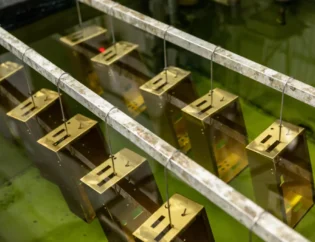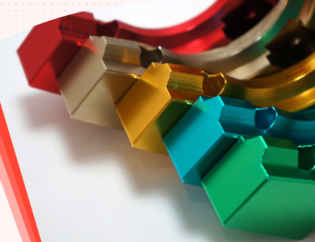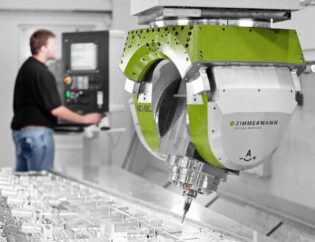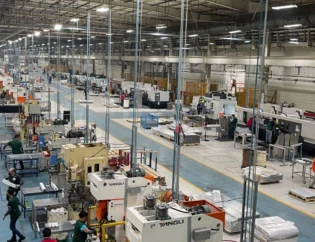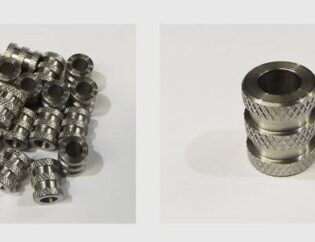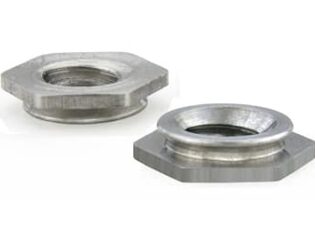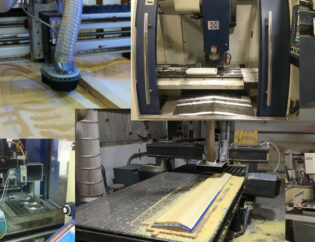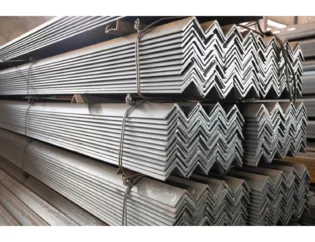Injection molding is a pivotal manufacturing process that shapes a wide array of products, from everyday household items to complex industrial components. Understanding this technique is essential for engineers, designers, and manufacturers alike, as it offers efficiency, precision, and scalability. This guide delves into the intricacies of injection molded parts, providing insights into design considerations, material selection, and production techniques.
Readers can expect to learn about the various stages of the injection molding process, including mold design, material properties, and the impact of processing conditions on part quality. We will explore common applications and industries that rely on injection molding, highlighting its versatility and cost-effectiveness. Additionally, the guide will address challenges faced in production and best practices for optimizing outcomes.
By the end of this guide, readers will have a comprehensive understanding of injection molded parts, equipping them with the knowledge to make informed decisions in their projects. Whether you are a novice or an experienced professional, this resource will enhance your grasp of this essential manufacturing method and its significant role in modern production.
Understanding Injection Molded Parts: A Comprehensive Guide
Injection molding is a widely used industrial manufacturing process that involves creating parts by injecting molten material into an injection mold. This technique is particularly effective for producing high-precision and complex plastic parts, commonly referred to as injection molded parts. In this article, we’ll delve into the different types of molded parts, with a focus on plastic molded parts and the benefits of plastic injection molded parts.
Comprehensive Insights into Injection Molding
Injection molding is a highly efficient manufacturing process that allows for the mass production of complex plastic components. The process begins with the melting of plastic pellets, which are then injected into a custom-designed mold. This method is favored for its ability to produce high-quality parts with minimal waste.
Technical Features of Injection Molding
The following table summarizes the key technical features of injection molding:
| Feature | Description |
|---|---|
| Material Types | Primarily thermoplastics (e.g., ABS, PP, Nylon) and some thermosets. |
| Production Speed | Capable of producing thousands of parts per day. |
| Precision | High precision and repeatability in part dimensions. |
| Complexity | Can create intricate designs and geometries. |
| Waste Management | Minimal waste; excess material can often be recycled. |
| Cost Efficiency | Economical for large production runs due to low cost per part. |
| Customization | Molds can be designed for specific applications, allowing for flexibility. |
Different Types of Injection Molded Parts
Injection molded parts can be categorized based on their applications and material types. The following table outlines the different types of injection molded parts:
| Type | Description |
|---|---|
| Plastic Molded Parts | Used in various industries, including automotive, electronics, and consumer goods. |
| Metal Insert Molded Parts | Incorporates metal components into plastic parts for added strength and functionality. |
| Multi-Material Parts | Combines different materials in a single mold to achieve specific properties. |
| Overmolded Parts | Involves molding plastic over another material, such as rubber or metal. |
| Thin-Walled Parts | Designed for lightweight applications, often used in packaging and consumer products. |
Advantages of Plastic Injection Molded Parts
Plastic injection molded parts offer numerous advantages, making them a preferred choice in various industries:
-
Precision and Consistency: Injection molding allows for high precision and uniformity in part production. The mold’s design ensures that each part is consistent with the others, which is crucial for applications requiring tight tolerances.
-
Complex Geometries: The process can produce parts with complex shapes and intricate details that would be difficult or impossible to achieve with other manufacturing methods.
-
Efficiency and Cost-Effectiveness: Once the mold is created, the injection molding process can produce a large number of parts in a relatively short time. This makes it a cost-effective option for high-volume production.
-
Material Versatility: A wide range of plastic materials can be used in injection molding, allowing for customization based on the required properties such as strength, flexibility, and temperature resistance.
-
Reduced Waste: The injection molding process is efficient, and the precision of the process minimizes material waste. Excess material can often be reprocessed and reused, further enhancing sustainability.
Applications of Plastic Injection Molded Parts
Plastic injection molded parts are used across various industries due to their versatility and reliability. Some common applications include:
– Automotive Industry: Parts such as dashboards, trim components, and housings are often made using injection molding.
– Consumer Electronics: Enclosures, buttons, and connectors for electronic devices are produced with high precision using plastic injection molding.
– Medical Devices: Components for medical equipment and disposable items like syringes and inhalers benefit from the process’s precision and cleanliness.
– Household Products: Everyday items like kitchen utensils, toys, and storage containers are commonly made from plastic injection molded parts.
Conclusion
Injection molded parts, particularly plastic molded parts, play a crucial role in modern industrial manufacturing. The plastic injection molding process offers numerous advantages, including precision, efficiency, and material versatility. Whether used in automotive, electronics, medical devices, or household products, plastic injection molded parts provide reliable performance and consistent quality.
Understanding the capabilities and benefits of this process can help businesses and designers make informed decisions for their manufacturing needs. If you’re considering plastic injection molding for your next project, explore the possibilities and advantages this technique offers. With its ability to produce complex and high-quality parts, injection molding is a valuable tool in the world of industrial manufacturing.
FAQs
1. What materials are commonly used in injection molding?
Injection molding primarily uses thermoplastics such as ABS, polypropylene (PP), and nylon. Some processes also accommodate thermosets and other materials.
2. How does injection molding compare to 3D printing?
Injection molding is faster for mass production and offers higher precision, while 3D printing allows for more complex designs and rapid prototyping.
3. What industries benefit from injection molded parts?
Industries such as automotive, consumer electronics, healthcare, and aerospace utilize injection molded parts for their efficiency and versatility.
4. Can injection molding produce complex shapes?
Yes, injection molding is capable of producing intricate designs and geometries that are often challenging to achieve with other manufacturing methods.
5. How can I get started with injection molding for my project?
You can begin by consulting with manufacturers like www.ptms-mold.com, www.protolabs.com, www.runsom.com, reliantplastics.com, or www.xometry.com to discuss your design and production needs.

